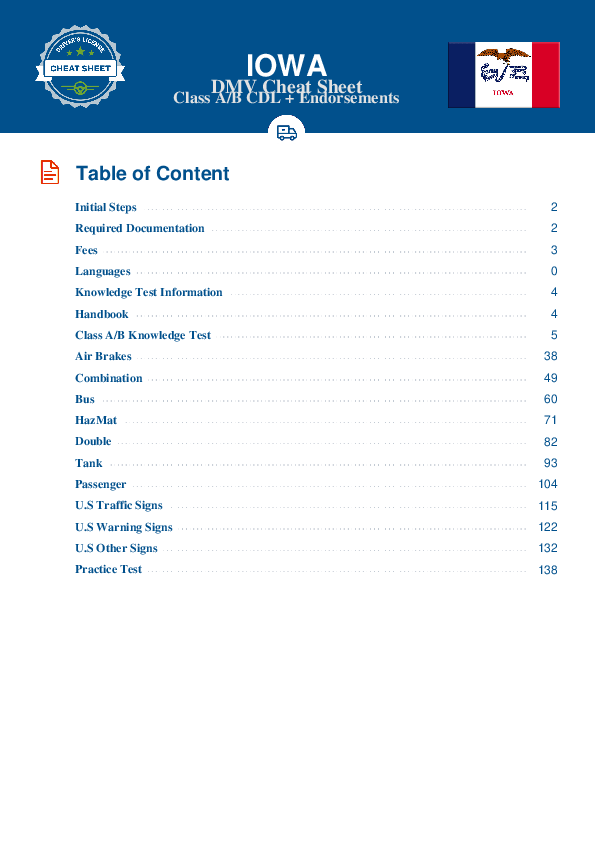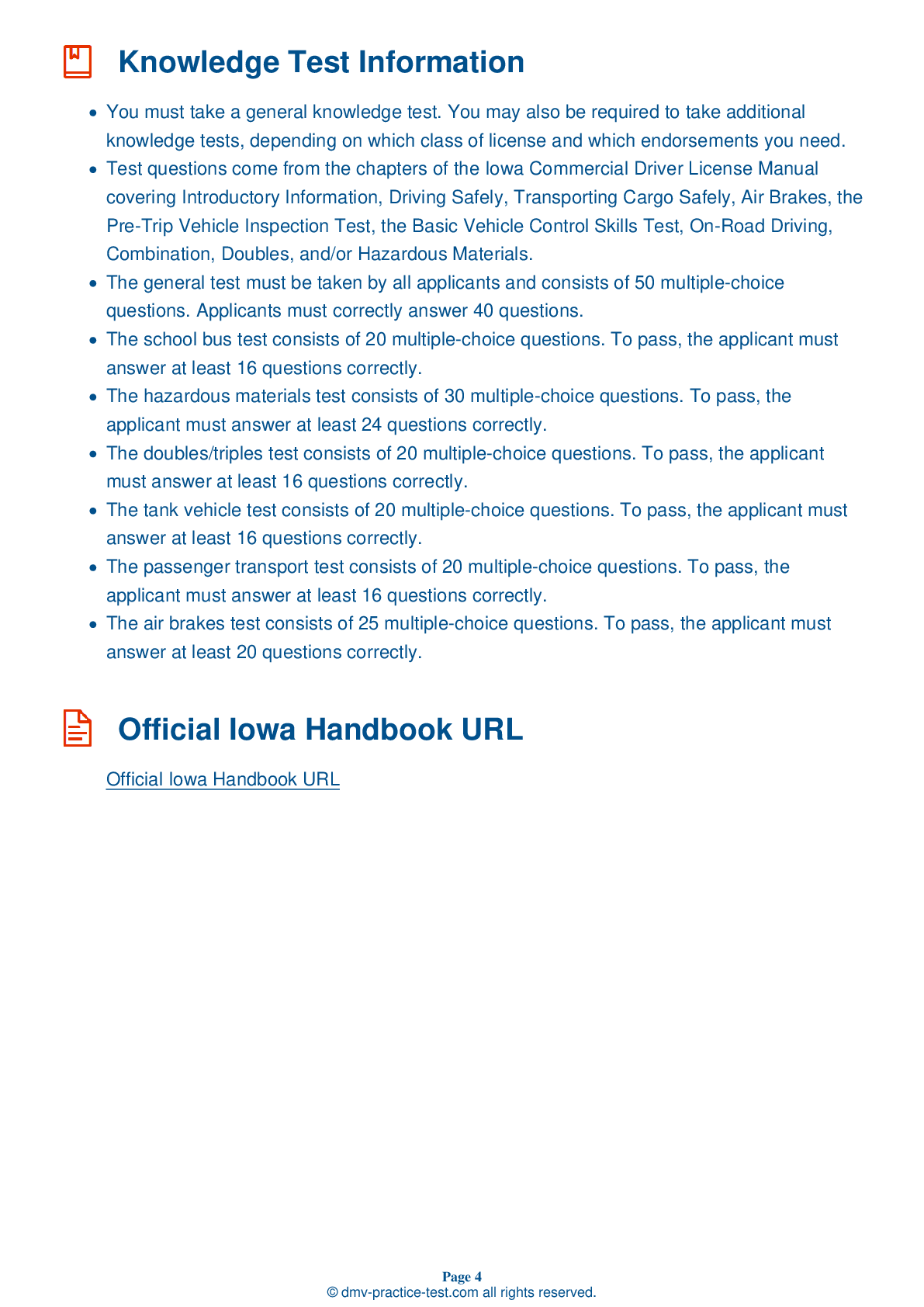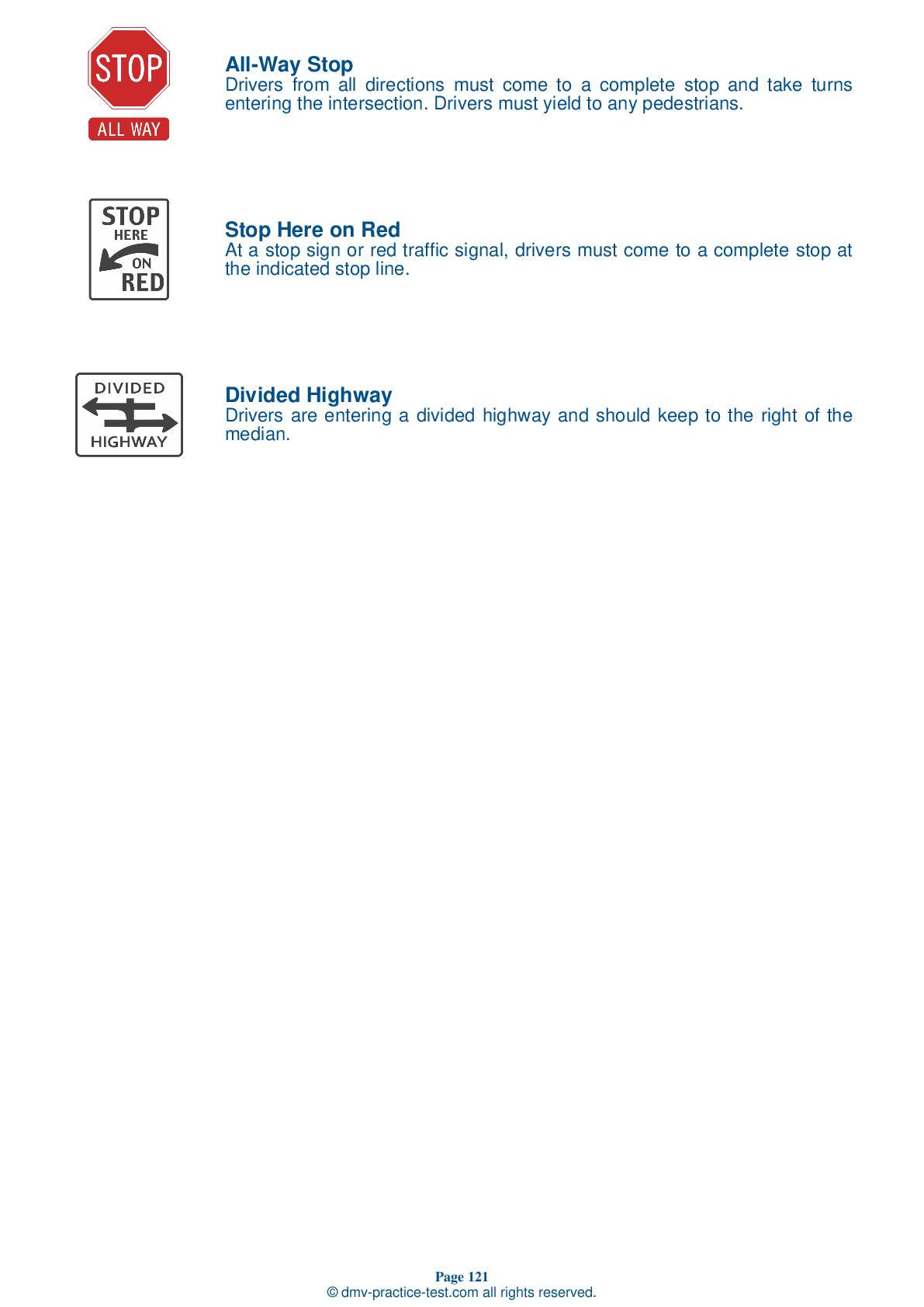Knowledge Test Class B #2
Class B Driving Test | Iowa 2026 #2 Page 2 of 7
Train for FREE online with our Iowa class B license test. The official exam test consists of several obligatory parts, with all of them checking your knowledge of different blocks of road rules. If you need to obtain a IA CDL class B permit in 2026, practice as much as possible. Free sample tests published on our website will help you check and improve your knowledge and boost your grades. Please bear in mind that CDL class B requirements may vary from state to state.
50
40
20
8 . Mirrors should be:
When driving, you should regularly check your mirrors, both to be aware of traffic and to check for problems on your own vehicle.
9 . Rough acceleration:
Always speed up smoothly and gradually so that your vehicle does not jerk. Rough acceleration can cause mechanical damage.
10 . You may:
A person cannot have more than one driver license at a time. States share information through a computer database to ensure that no person has more than one license. Violation of this law could result in fines or jail time.
11 . When driving in hot weather:
Because air pressure increases as air expands in the heat, it is important to monitor your tire pressure when driving in very hot weather. To prevent the engine from overheating, there must be an adequate amount of oil in the engine, as well as enough water and antifreeze in the cooling system. Antifreeze is helpful for the engine in both hot and cold weather.
12 . How much distance will an air brake-equipped vehicle need to come to a complete stop if it is traveling at 55 mph under ideal driving conditions?
A vehicle's total stopping distance is made up of perception distance, reaction distance, brake lag distance, and braking distance. With all of these factors included, an air brake-equipped vehicle traveling at a speed of 55 mph under ideal driving conditions will need approximately 450 feet to come to a complete stop.
13 . When driving, being aware of what is happening behind you is:
When driving, it is important to be aware of what is happening behind and to the sides of your vehicle. Mirror checks and head checks should be a normal part of your scanning routine.
14 . When in heavy traffic, the safest driving speed is:
In heavy traffic, it is safest to travel at the same speed as other vehicles. If two vehicles continue to drive in the same direction at the same speed, they cannot hit each other.
2026 Iowa | Frequently Asked Questions
A CDL Class A license in Iowa is defined as a commercial driver's license that permits the holder to operate any combination of vehicles with a Gross Vehicle Weight Rating (GVWR) of 26,001 pounds or more, provided the GVWR of the vehicle(s) being towed is in excess of 10,000 pounds. This includes tractor-trailers, truck and trailer combinations.
A Class A CDL license in Iowa allows the holder to operate various types of vehicles including tractor-trailers, truck and trailer combinations, tank vehicles, livestock carriers, and flatbeds. The license covers vehicles with a Gross Vehicle Weight Rating (GVWR) over 26,001 pounds and the towed vehicle is more than 10,000 pounds.
To obtain a Class A CDL license in Iowa, you must be at least 18 years old (21 for interstate driving), possess a valid non-commercial driver's license, and pass a vision test. You'll also need to pass written knowledge tests, a skills test, and a pre-trip vehicle inspection. For certain endorsements like hazardous materials, a background check is required.
In Iowa, you must be at least 18 years old to qualify for a Class A CDL license. However, please note that while you can obtain a CDL at 18, federal law requires drivers to be at least 21 years old to drive commercial vehicles across state lines or to transport hazardous materials.
Specific endorsements aren't required for a Class A CDL license in Iowa but they can enhance your license. Endorsements like "T" for double/triple trailers, "P" for passenger vehicles, or "H" for hazardous materials allow you to operate specific types of vehicles or carry certain types of cargo. Each endorsement requires passing additional tests.
The Class A CDL skills test in Iowa encompasses three main areas: pre-trip inspection, basic vehicle control, and on-road driving. The pre-trip inspection tests your ability to inspect your vehicle before driving. Basic vehicle control assesses your ability to control the vehicle. On-road driving tests your ability to drive the vehicle in various traffic situations, including turns, intersections, and highway driving.
Yes, Class A CDL license holders in Iowa may face limitations based on their medical qualifications, the type of vehicle they're allowed to operate, and the cargo they can transport. This could result in restrictions such as "No passengers", "Intrastate only", or "No air brake equipped". Also, drivers under 21 are limited to intrastate operation only.
In Iowa, the written Class A CDL test is primarily administered in English. However, some locations may offer the test in Spanish. It's important to note that even if the test is taken in Spanish, the Federal Motor Carrier Safety Administration requires all commercial drivers to read and speak English sufficiently to converse with the general public, understand highway traffic signs and signals, respond to official inquiries, and make entries on reports and records.
Yes, you can request accommodations for the Class A CDL written test in Iowa if you have a disability. The Iowa Department of Transportation is committed to providing reasonable accommodations in accordance with the Americans with Disabilities Act. You should contact your local DOT office in advance to discuss your needs and arrange for modifications or aids to assist you during the test.
Yes, if you don't pass the Class A CDL written test in Iowa, you can retake it. However, you must wait at least one day before retaking the test. Please note that there may be additional fees for each retest. It's advised to review your study materials thoroughly before attempting the test again to increase your chances of passing.



